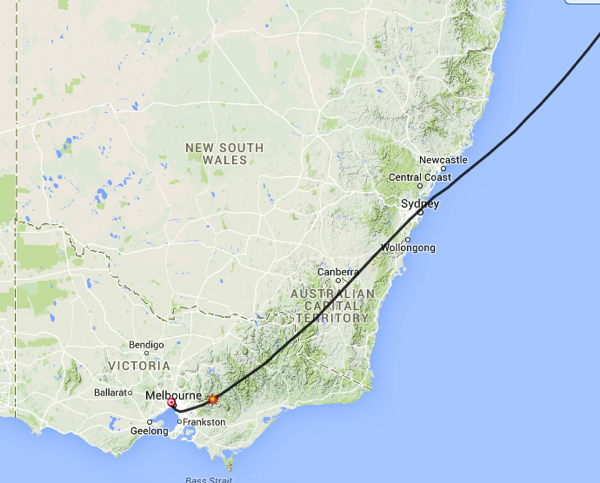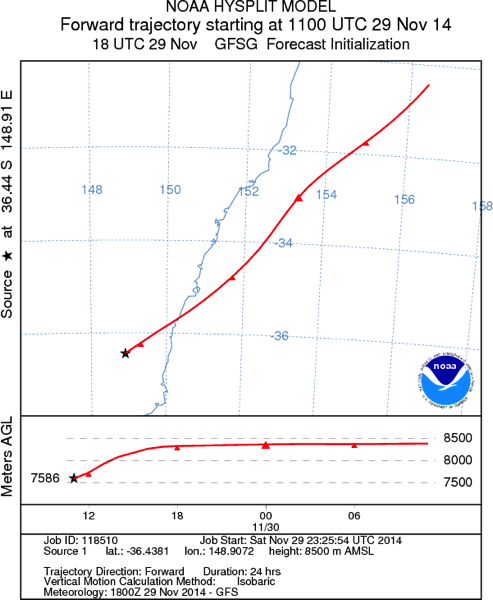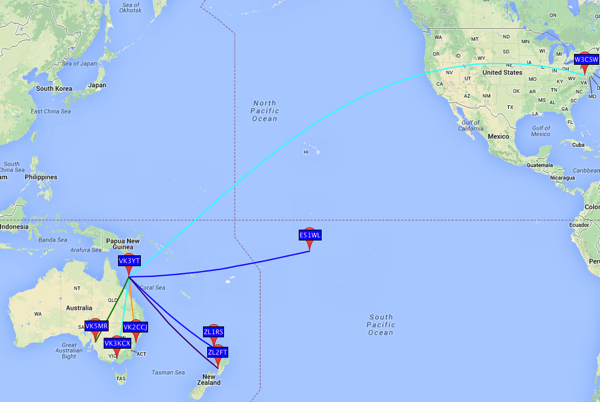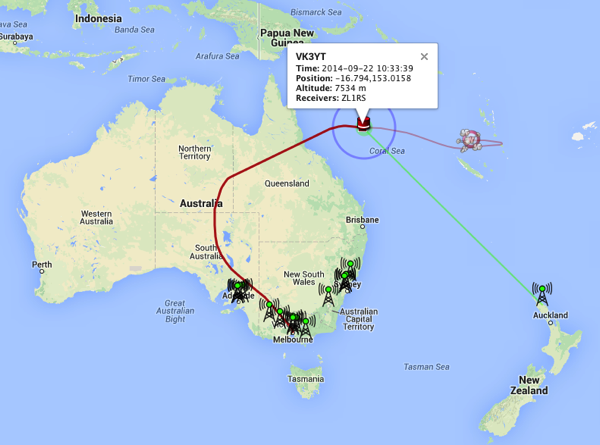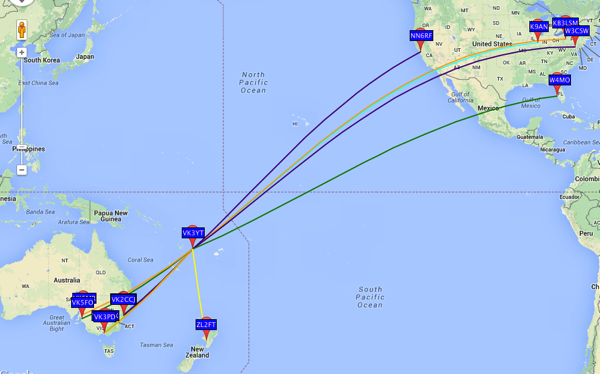PS-30 was released at 7am AEST 27/12/2014 from Melbourne.
– Solar powered, 25mW TX
– WSPR on 30m (dial 10.138700Mhz) and 20m (dial 14.095600Mhz)
– JT9 on 10.142000Mhz and 14.075000Mhz centre (dial 10.141000Mhz and 14.074000Mhz);
See HF decoding info in the FAQ section or here
Assistance with tracking is appreciated.
Update #1: 11:46am AEST 31/12/2014.
The balloon has been travelling East in the last few days, arriving and leaving New Zealand at the Southern end yesterday.
Due the change in propagation condition, JT9 and WSPR reception has been very localised to ZL and VK stations.

Prediction

Update #2: 11:00am AEST 1/1/2015
Happy New Year! Hope you all have a safe and Happy New Year.
PS-30 did a small loop yesterday, and has been heading East again.
The HF condition has been the same. Will be interesting today as the balloon will get some distance away from VK and ZL.
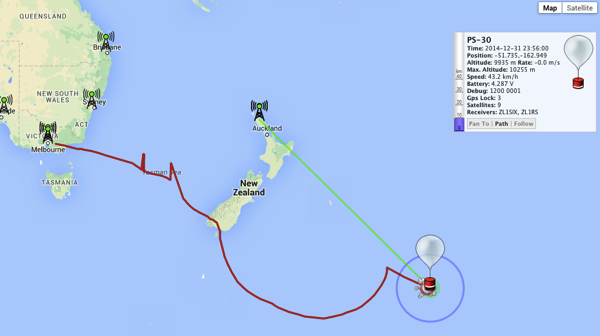
It would be great if stations along the Pacific and South America can have a listen for the telemetry at the scheduled time. This is what the waterfall looks like:

Update #3: 9:30am AEST 2/1/2015
Entering 6th day of the flight. We are so lucky to have a team of core trackers that has been around every day tracking the balloon.
HF condition is still the same, the balloon is more than half way between Australia and South America, about the same pace as the previous Melbourne-Brazil trip that took 11 days.
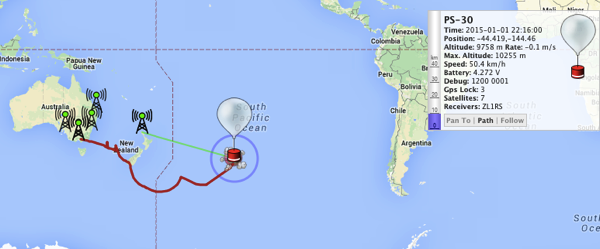
Updated prediction
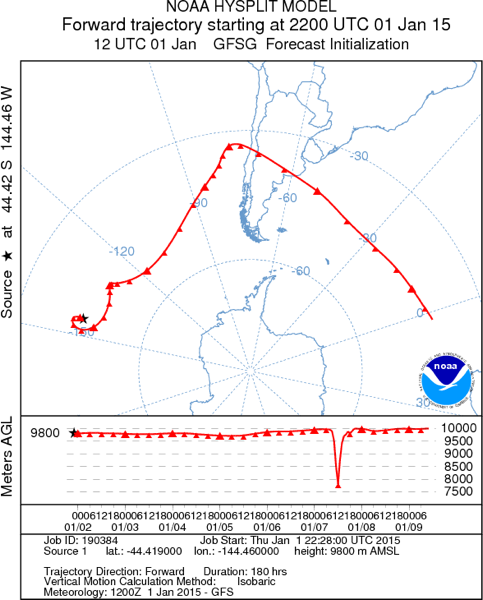
Update #4: 4:00pm AEST 3/1/2015
First day of the second week was a quiet one. The balloon did a loop for the whole day and didn’t cover much ground distance. The prediction shows a more directly path towards the East from now.
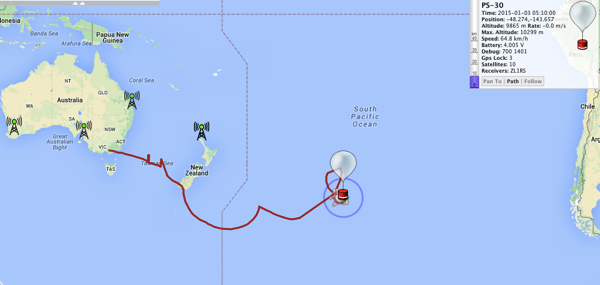
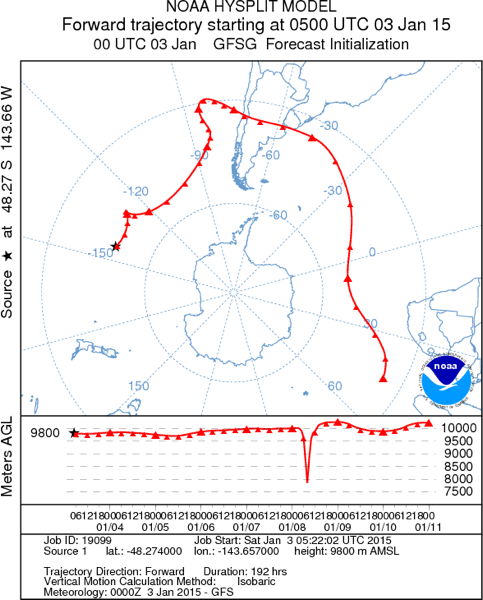
Update #5: 11:00pm 7/1/2015 AEST
The balloon continued to travel East towards South America in the last few days.
It has been quite challenging for the tracking stations, as the sunset time has been getting earlier, and start overlapping with propagation time when the signal could be heard in ZL and VK just as when the balloon went to sleep.
Big thank you to the new stations joining the tracking in the last few days, making this a true international exercise!
Prediction shows we will be crossing into Chile early tomorrow morning.
SNUS

WSPR

WSPR map

Prediction
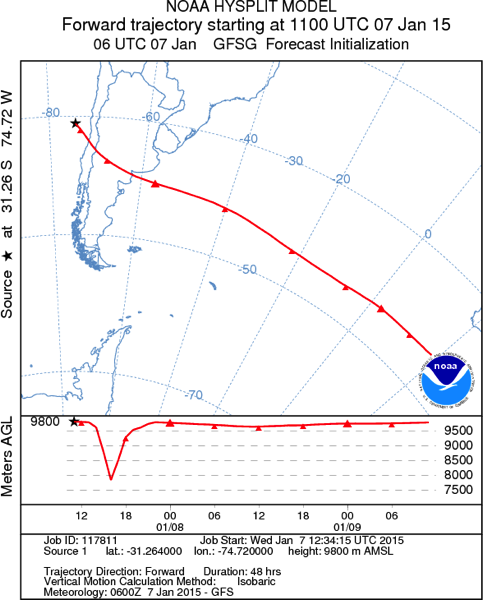
Update #6: 7am 8/1/2015 AEST
We are in Argentina 🙂
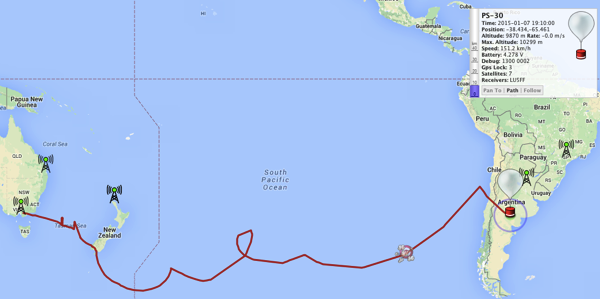
Update #7: 1:30pm 9/1/2015 AEST
The balloon has gone out of range for a day.
Prediction shows it is due to reach South Africa around 18:00 9/1/2015 UTC.
It would be great if anyone along the path can have a listen and try to decode any JT9 signal on the designated frequency, starting at around 6:00UTC when the balloon will be in the sun and transmitting.
If you leave your dial at 14.074Mhz USB, please check visually for any faint JT9 signal around the 1kHz mark on the audio passband, at the following minutes past the hour:
10, 16, 30, 36, 50, 56.
It should look like this:
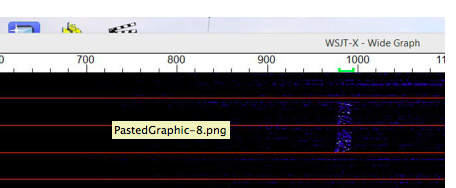
We would love to get signal reports, please send them to vk3yt@comms.net.au
Update #8: 7:30pm 10/1/2015 AEST
There was a massive international effort to track down the balloon after PS-30 wasn’t heard from since 22:50 7/1/2015 UTC. After two days it started to look like PS-30 was lost, but at 6:10 UTC today (10/1/2015), ZS6KN started to send in telemetry from the balloon, showing its location just over the coast off South Africa/Namibia.
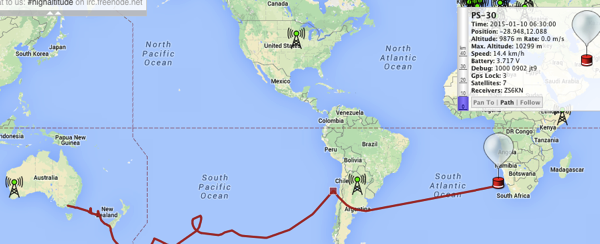
Prediction

It is just phenomenal that we received so much help at very short notice.
Thanks everyone, and hope you will follow the balloon for as long as possible!
Update #9: 12:00pm 12/1/2015 AEST
It doesn’t look like PS-30 is in any hurry to go home. Overnight telemetry shows the location as still on the West coast of Africa.
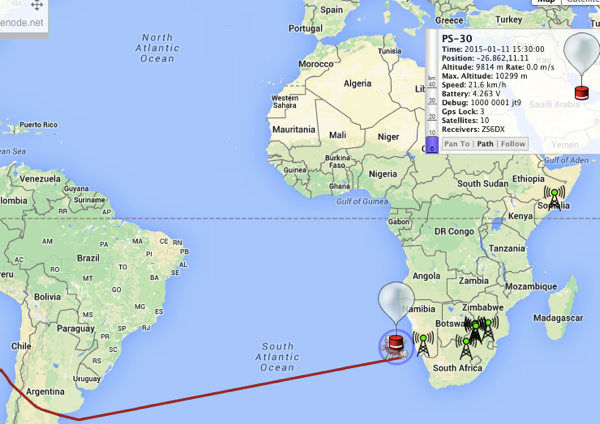
We also had some additional WSPR spots from ZS
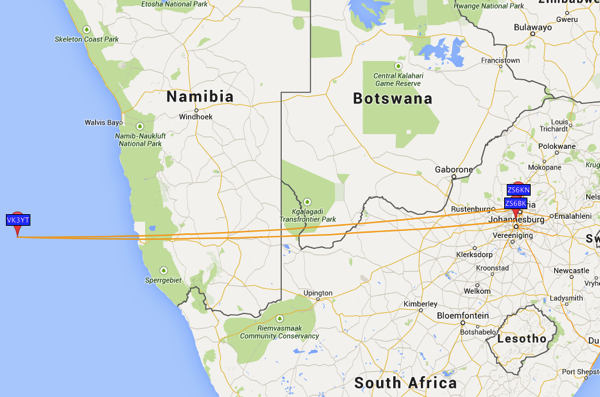

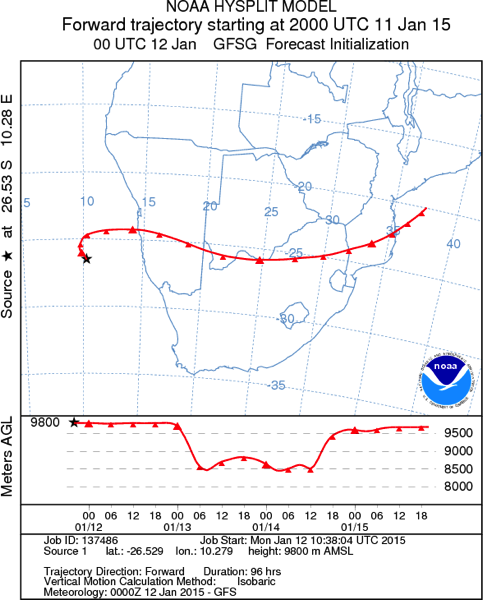
Update #10: 7pm 13/1/2015 AEST
The balloon finally got inland after many days wandering off the coast.
The ZS stations are doing a great job with capture telemetry packets from PS-30.

Update #11: 8am 15/1/2015 AEST
PS-30 left Africa coast last night, said farewell to the amazing continent that has been hosting it the last few days! It was a great day for telemetry as well, packets were coming in non-stop from morning to night, from multiple stations.
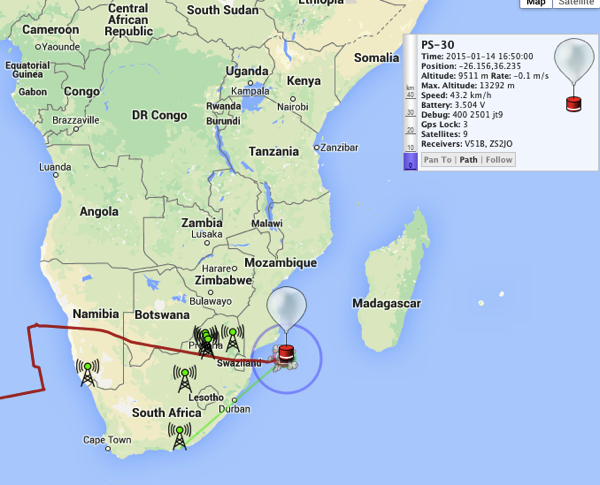
WSPR

Looks like it is straight to Australia from here:
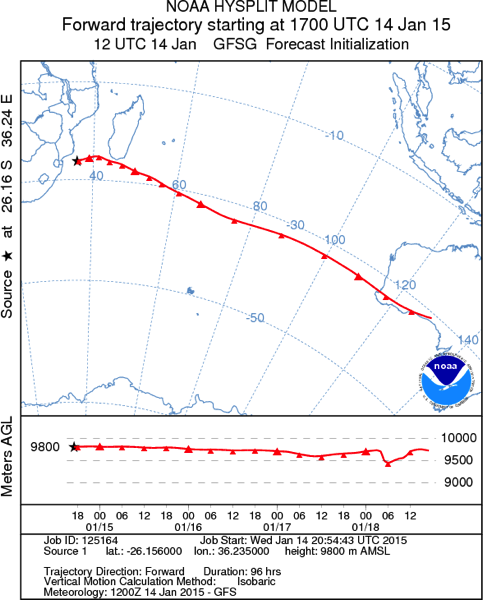
Update #12: 18/1/2015 AAEST
PS-30 went down near Madagascar at 5:51am 16/1/2015 AEST, 25H short of 3 weeks in the air.
There was some bad weather in the region, but speculations also include the possibility it was brought down by the naughty Penguins on the Island.
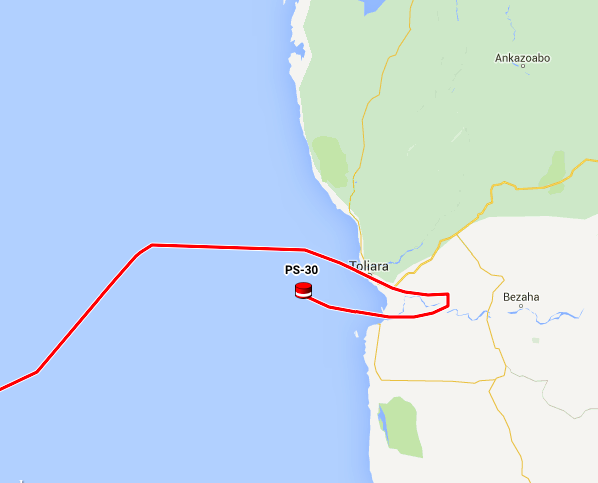
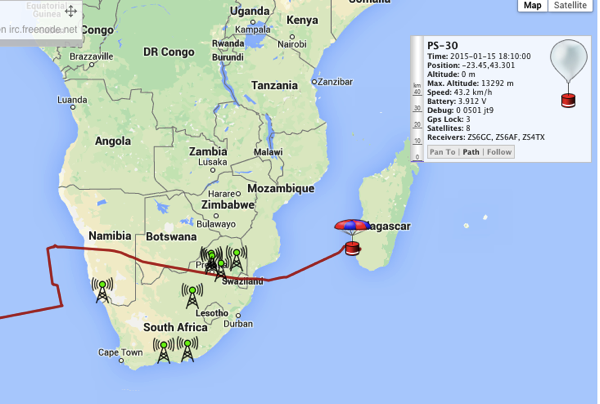
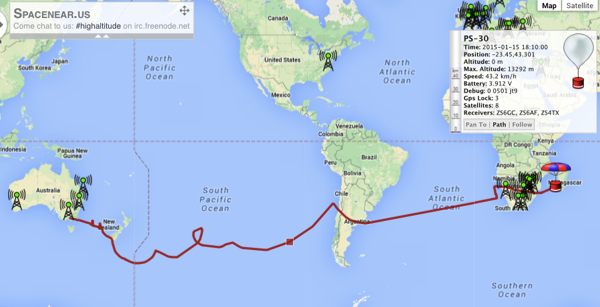
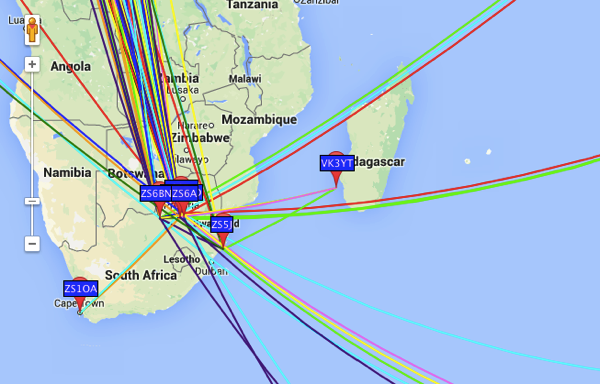
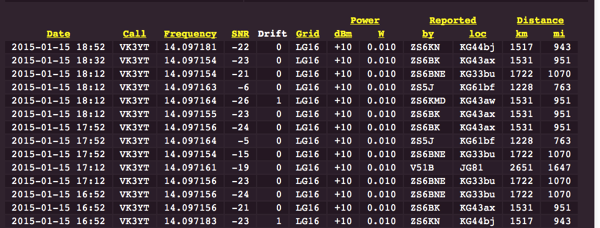
Final position, with last-seen time as of 7am 24/1/2015 AEST
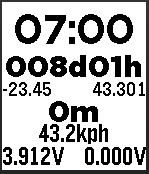
A big thank you to everyone that have assisted with the trip in many ways, from tracking, to sending feedback, words of encouragement, and getting help when needed. The level of interest from all around the world has been amazing. The trip would not have been so successful without the collective effort of the like-minded community built-up along the way.
See you at the next trip!

